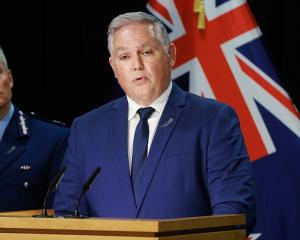
With summer upon us, our state highways are busier than ever. Tourism is booming and the number of visitors driving around New Zealand is increasing.
In the top half of the South Island, the traffic pressure on our highways is even greater following the Kaikoura earthquakes. Driving safely in Marlborough and Canterbury is more important than ever as overseas drivers, domestic drivers and tour and freight operators share roads that are carrying four times the normal volume of traffic.
Traditionally, domestic tourists have made up the bulk of what the industry calls ''free independent travellers''. These are visitors who like to drive themselves in small groups or as couples, avoiding mass tourism and the holiday packages of traditional travel operators.
However in recent times there has been a marked increase in the number of overseas visitors who hire, buy or borrow cars and camper vans so they can enjoy the same kind of holiday experience. This trend is expected to continue and it means more visiting drivers on New Zealand's roads.
Many of our roads are challenging for people unfamiliar with them and that's why the NZ Transport Agency has been leading a project since 2014 to help keep overseas drivers and others they share the roads with safe.
The Visiting Drivers Project is a partnership between central and local government and the rental vehicle and tourism industries. It is focused on the Otago, Southland and the West Coast, where visiting drivers (from other parts of New Zealand and overseas) make up a large proportion of the traffic.
Underpinning the project is the concept of ''host responsibility''. Put simply, this is about our responsibility, as New Zealanders, to help our visitors have a safe and enjoyable time in our country.
A wide range of initiatives are in place to inform overseas visitors about driving safely in New Zealand. The information reaches them at each stage of their holiday: planning, booking, in-flight, arriving in New Zealand, and when actually driving on the road.
This means visitors to other parts of New Zealand, and not just those coming to the project regions, benefit from the initiatives. For example, overseas travel agents are passing on safe driving information, Air New Zealand's long-haul flights have an app and video on driving in New Zealand, rental vehicle operators are distributing a ''Driving in New Zealand'' leaflet to those hiring rental vehicles and accommodation providers have guidelines to assist them when giving driving information to visitors.
The latest initiative is this summer's road safety campaign in Otago, Southland and the West Coast.
The main objective is to help overseas drivers recognise that New Zealand's roads are different from what they're used to and encourage them to adjust their driving when necessary.
Billboards, posters, digital advertising and social media are being used to get key safety messages across to visitors before they begin their driving journeys.
We're targeting overseas drivers from the top six countries in terms of crash statistics: Australia, Germany, China, United States, Britain and India. The messages will also reach domestic visitors to the regions.
As well as providing information to visitors, the Visiting Drivers Project is improving roads to make them safer. This summer, $3 million will be spent on road safety works on key state highway tourist routes in Otago, Southland and the West Coast, including: no-passing lines, ''keep left'' arrows, rest area signage upgrades, curve sign improvements and new safety barriers.
These improvements are designed to reduce the likelihood of crashes occurring and to minimise the consequences when they do occur.
Our efforts to keep visiting drivers safe through education and information campaigns, as well as physical improvements to popular tourist routes are world-leading. Road safety organisations in the United Kingdom and Australia are taking an interest and looking at how they can replicate some of New Zealand's initiatives.
One of the greatest strengths of the Visiting Drivers Project has been the strong partnerships at all levels. This project has brought together many organisations and we've been able to make the most of all of our communications channels.
With tourism our largest export industry, in terms of foreign exchange earnings, our reputation as a responsible host becomes all the more important. Ensuring overseas visitors have a safe and enjoyable experience in this country benefits New Zealand as a whole.
-Jim Harland is chairman of the Visiting Drivers Project Governance Group.











